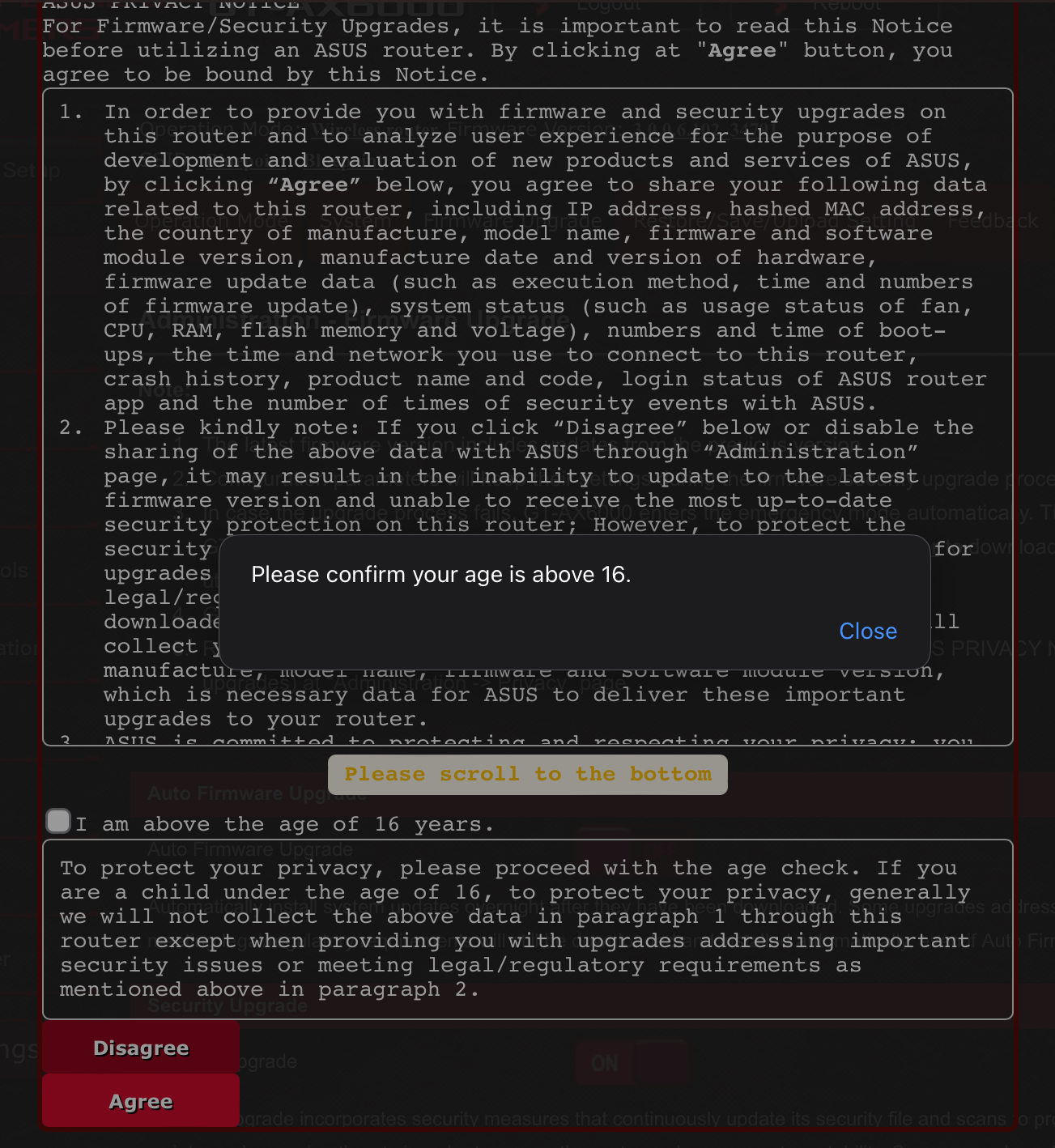
ASUS rolled out an update to its firmware (3.0.0.6.102_34791) that now requires users to be over the age of 16 and to send a slew of metrics and data back to ASUS. If you do not agree or do not check the box to verify you are 16y or older, you cannot use the router. At this time, I’m not sure if ASUS has meant to disable the router for anyone under 16 or if it’s a bug.
You can opt out at any time but lose access to a slew of features:
Please note that users are required to agree to share their information before using DDNS, Remote Connection (ASUS Router APP, Lyra APP. AiCloud, AiDisk), AiProtection, Traffic analyzer, Apps analyzer, Adaptive QoS, Game Boost and Web history. At any time, users can search the contents of the terms at this page or stop sharing their information with other parties by choosing Withdraw.
Moreover, ASUS disables automatic firmware updates and worse, all security upgrades unless you opt into the data sharing. Security upgrades perform the following:
Security upgrade incorporates security measures that continuously update its security file and scans to protect against malware, malicious scripts, and emerging threats in order to secure the router and ensure system stability. Some upgrades addressing important security issues or meeting legal/regulatory requirements will still be downloaded and installed automatically, even if “Security Upgrade” is turned off.
Edit: I have personally contacted their CEO’s office, but if others would like to voice their disapproval as well, here is a link: https://www.asus.com/us/support/article/787/


I’m seeing a few comments suggesting OpenWRT, which is what I use and love: the correct response to this level of capitalist tomfoolery should absolutely be to 1. buy hardware that supports FOSS out of the box, or 2. install FOSS firmware.
BUT: OpenWRT isn’t for everyone. Installation on supported devices is usually pretty easy, but it does require being invested in setup, maintenance, and understanding of the software. There is little built-in handholding, and most setup beyond basic functions requires reading the docs and wiki; sometimes, some functionality requires running commands directly on the device rather than the LuCI web-interface.
This kind of understanding and investment should be the end-goal of all privacy-oriented tech users. Technology is complicated, and each layer of handholding that devs add also necessarily obfuscates behind-the-scenes functionality, which runs counter to privacy and security. That being said, the barrier for entry to privacy-respecting tech shouldn’t be “a masters in CompSci,” and thus any alternative to major tech brands is still a step up from just accepting what they give you. Just be aware that your current firmware may be a stepping stone towards software freedom, instead of a stopping point.